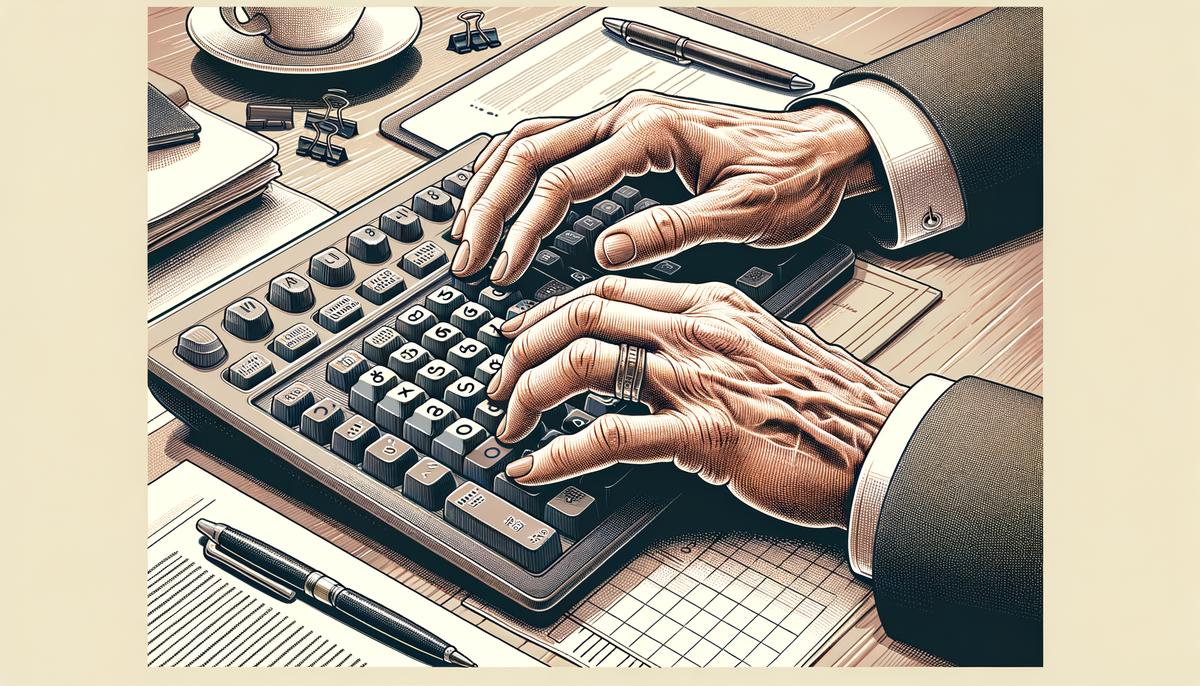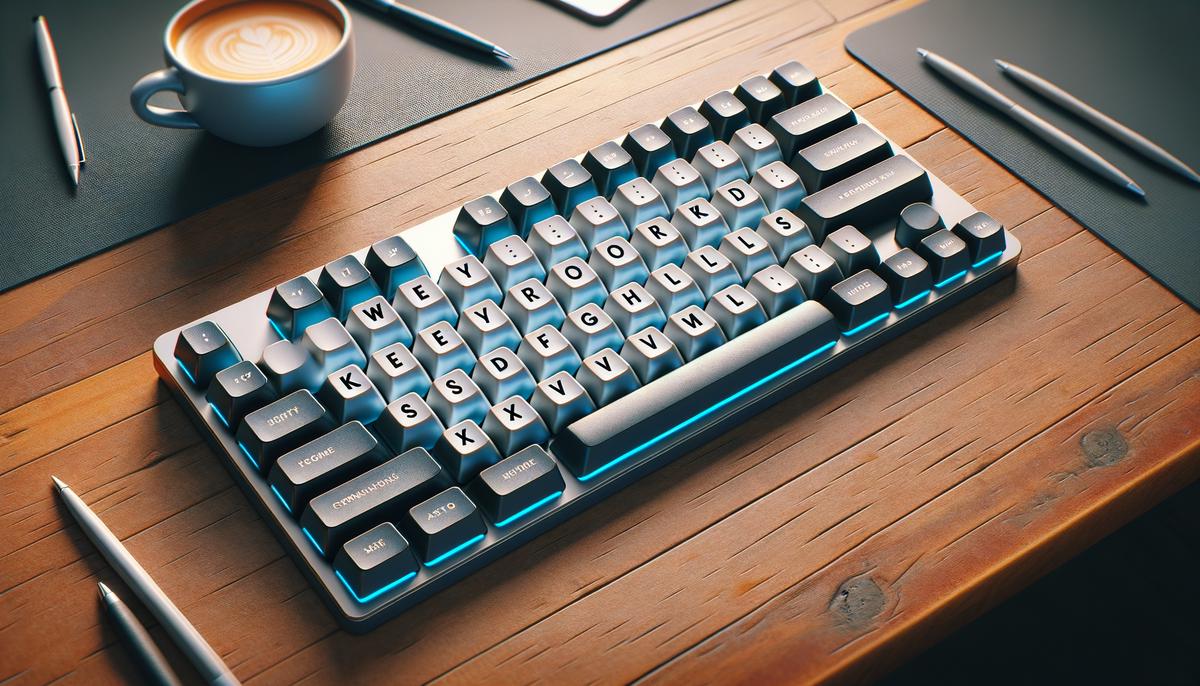When we think of typing, many of us imagine sitting at a keyboard, tapping away letters to form words and sentences. But there’s a whole other world of typing that revolves around numbers: the ten key. This might sound a bit less exciting than crafting stories or sending emails, but mastering the ten key can unlock a level of data entry efficiency that full keyboard proficiency can’t match. With its intuitive layout and focused approach, becoming a ten key whiz is like gaining a superpower for number crunching. From accountants to data entry specialists, those who conquer the ten key find themselves zipping through numerical tasks with ease and precision. Let’s dive into what makes the ten key so special, and why it deserves more attention.
Efficiency in Data Entry
Diving into the world of data entry, you might wonder about the efficiency showdown between ten key and full keyboard proficiency. Both have their slots in the professional rhythm, but when it comes to the crunching numbers game, there’s a clear divide.
Ten key proficiency isn’t just about tapping away at the calculator or the numpad; it’s an art. Picture this: your fingers dance across the numeric keypad, inputting data at a pace that would make most heads spin. This technique, honed with practice, transforms the numeric keypad into a tool of speed and precision. The ten key setup, with numbers and functions neatly arranged, has a learning curve that pays off by boosting input speed significantly once mastered.
On the other side of the spectrum, full keyboard skills are a broader toolset. Typing out reports, crafting emails, or coding away requires a dance over a much larger arena. The QWERTY layout, a staple in our digital lives, demands familiarity with all letters, numbers, and an array of symbols to achieve fluency. This comprehensive skill covers more ground but at the trade-off of specializing in numerics.
So, when the task at hand is entering stacks of numerical data, the ten key reigns supreme. It’s like choosing a sports car over a sedan for racing; both will get you there, but one is built for speed. The focused layout of the ten key minimizes movement and maximizes efficiency, making it a powerhouse for number-intensive tasks. Think about accountants, financial analysts, and data entry professionals; in their worlds, ten key proficiency can significantly cut down on input time, reducing hours of work to minutes.
Comparatively, tasks demanding versatility, where letters and symbols mingle with numbers, call for the jack-of-all-trades approach that full keyboard skills offer. It’s a balance between specialization and generalization, where the nature of the task dictates the champion of efficiency.
In summary, when it boils down to pure data entry, especially with a heavy lean on numbers, being a whiz at the ten key can massively outpace the full keyboard thrum. It’s a specific skill with a specific advantage, making numerical data entry not just faster, but also potentially more enjoyable. Embrace the ten key for what it is – a specialized tool in your professional toolkit.

Learning Curve and Training
Venturing into the realm of data entry and typing skills, there exists a notable divergence between mastering the ten key and full keyboard proficiency. While both are valuable assets in the modern workplace, their learning curves present unique challenges and rewards. The journey to proficiency in these distinct areas highlights the specialized nature of ten key skills versus the more comprehensive approach required for full keyboard mastery.
Delving into the ten key first, it’s akin to focusing a lens precisely on a crucial area. The learning curve here is relatively steep, but not wide. Imagine it as climbing a ladder where each rung brings you closer to a specific goal – speed and accuracy with numbers. The initial challenge is significant, as it requires fine motor skills and dedication to muscle memory. However, the scope is narrow, focusing solely on numerical data entry. This means that, with consistent practice, users often experience rapid progress after conquering the basics. The confined nature of ten key typing allows for a quicker sense of achievement and proficiency, particularly appealing for those in roles where numerical data management is paramount.
Transitioning to full keyboard proficiency unfolds a different narrative. This skill set is akin to navigating a vast landscape. The breadth of knowledge required spans letters, numbers, symbols, and various keyboard shortcuts. Here, the learning curve is wider but more gradual. Picture it as embarking on a long journey across diverse terrains. Each step forward encompasses a broader set of skills, from crafting sentences to executing commands, which means the path to efficiency feels more extensive. The challenge lies not just in speed, but in versatility—being able to communicate, command, and create using the full spectrum of the keyboard. Consequently, achieving proficiency demands more time and varied practice, as users must familiarize themselves with a far greater range of functions.
Interestingly, while the ten key focuses on numerical precision and speed, full keyboard mastery encompasses communication, creativity, and command over computer functions. This distinction highlights the targeted efficiency of ten key skills suitable for specific professions, versus the wide-ranging utility of full keyboard proficiency applicable in almost every modern job role.
In conclusion, the contrast in learning curves between the ten key and full keyboard skills underlines the importance of aligning one’s practice with their professional needs and interests. Whether aiming for the focused expertise of ten-key proficiency or the broad capabilities afforded by full keyboard mastery, both paths offer valuable skills for navigating today’s digital world. The choice between them depends on one’s career focus, with each skill set opening doors to different opportunities and challenges.

Ergonomic Considerations
Moving into the nuanced world of ergonomics, there’s an intriguing divergence when comparing ten key and full keyboard use. While both are pivotal in the realm of data entry and general computing, how they interact with the human body presents a tale of two keyboards. Let’s unveil how ergonomic factors differ between these two typing paradigms, diving deep into posture, muscle strain, and workplace efficiency—without any technical jargon to weigh us down.
First off, think about your posture. Using a full keyboard demands a broader reach, which often leads your arms to extend more fully across the desk. This can mean your body is more engaged, from your shoulders down to your fingertips. However, this wider arm span can sometimes lead to slouching or leaning forward, especially if you’re reaching for keys at the far ends. On the flip side, the compact nature of the ten key setup allows users to maintain a more centered and upright posture. Your arms stay closer to your body, promoting a natural alignment of the spine and potentially reducing the risk of back pain.
Now, let’s chat about muscle strain. The full keyboard brings every letter, number, and function within the clack of a key, necessitating varied finger movements and greater hand mobility. This versatility keeps your fingers agile but can also amp up tension in the hands and forearms over extended typing sessions. Contrarily, the repetitive nature of ten key typing focuses strain on fewer muscles, mainly those in the right hand. While this repetition can streamline muscle memory, it also corners the risk of overuse injuries, like the dreaded carpal tunnel syndrome, into a smaller set of muscles.
Let’s not forget the role of equipment. Many ergonomic innovations focus on full keyboard setups, offering curved designs and split keyboards to cater to natural wrist positions. These gadgets aim to soften the blow of long typing sessions. Regarding ten keys, ergonomics might seem like an afterthought. However, standalone ten key pads offer flexibility in placement, allowing users to position the pad where it’s most comfortable, reducing shoulder strain and elbow discomfort.
In the realm of workplace efficiency, the ergonomic setup is paramount. A well-thought-out ergonomic environment can significantly boost productivity levels, whether you’re crunching numbers or crafting emails. Full keyboard users might find themselves tweaking chair heights or adjusting monitor distances to achieve that sweet ergonomic spot. Meanwhile, ten key aficionados might benefit more from adjustable wrist rests or pad positioning, ensuring their setup is snug and stress-free.
To wrap it up, the ergonomic journey through ten key and full keyboard use is a study in contrasts. From posture perks to the risks of repetitive strain, the key to maintaining balance is awareness and adjustment. Whether you’re a ten key titan or a full keyboard virtuoso, remembering to pause for stretches, optimizing your workspace for comfort, and listening to your body’s whispers before they become screams can keep your typing game strong and pain-free.

Impact on Professional Opportunities
In the competitive arena of the professional world, having sharp computer skills can catapult you to new heights. Here’s where it gets interesting: not all keyboard skills are created equal, and this is especially true when comparing ten key proficiency with full keyboard mastery. Both carry their weight in gold, but how they impact professional opportunities can differ vastly.
Diving into the universe of ten key mastery first, think of it as having a secret weapon in roles that are heavy on data entry. This includes sectors like accounting, finance, and inventory management. The precision and speed that come with being fluent in ten key typing aren’t just impressive; they’re often crucial. For those dreaming of excelling in these fields, ten key finesse could be what sets you apart from the competition. Imagine slicing through numerical data like a hot knife through butter – that’s the edge ten key mastery offers.
On the flip side, mastering the full keyboard opens up a broader spectrum of opportunities. In today’s digital age, where written communication dominates, being a whiz on the full keyboard can make you indispensable. From crafting compelling emails to programming, to creating persuasive content, the versatility of full keyboard proficiency is undeniable. It’s akin to being fluent in multiple languages in the world of typing. This skill set is essential for roles in marketing, content creation, administration, and much more. It’s about being a jack-of-all-trades in typing, ready to tackle any task with confidence.
However, the journey to proficiency in either skill requires dedication and practice. While ten key specialists might focus on hitting towering keys-per-minute speeds, those mastering the full keyboard need to balance speed with accuracy across a wider array of tasks. It’s not just about how fast you can go but also about how well you can adapt your skills to different challenges.
The crux of the matter is that in the landscape of professional opportunities, both ten key and full keyboard skills are invaluable, but their implications vary. Ten key mastery might make you a superhero in roles that demand high-speed numerical entry, while full keyboard proficiency positions you as a versatile player, ready to shine in a plethora of typing-intense scenarios. The road you choose should align with your career aspirations and the kind of keyboard prowess that will serve you best in the long run.
As we navigate through the digital age, where typing is as fundamental as writing once was, enhancing either skill could not only open doors to new professional opportunities but also set the stage for a fulfilling career. Whether it’s the precision of ten key typing or the versatility of full board mastery, the keyboard is your oyster.

We’ve explored the distinctive paths of mastering the ten key versus full keyboard proficiency, each with its own set of advantages and challenges. Navigating through the journey of learning these skills not only enhances our abilities but also broadens our opportunities in the professional world. Whether it’s the high-speed, accurate number entry coveted in finance and accounting or the versatility required across various job sectors, these skills equip us to meet the demands of the modern workplace. Embracing the journey of learning, whether it’s the focused precision of the ten key or the comprehensive scope of full keyboard mastery, enriches our professional toolkit and prepares us for whatever challenges may come our way.
Writio: Your time-saving AI content writer. This article was written by Writio.
Leave a Reply